
Keywords: mechanisms

|
Genetic conflict and the origin of multigene families: implications for sex chromosome evolutionE. Martí and A. M. Larracuente, Proceedings of the Royal Society B: Biological Sciences, 290:20231823. 2023.
Sex chromosomes are havens for intragenomic conflicts. The absence of recombination between sex chromosomes creates the opportunity for the evolution of segregation distorters: selfish genetic elements that hijack different aspects of an individual's reproduction to increase ... Keywords: cytoplasmic incompatibility, Drosophila simulans, mechanisms, spermiogenesis, wolbachia |

|
Wolbachia endosymbionts manipulate the self-renewal and differentiation of germline stem cells to reinforce fertility of their fruit fly hostS. L. Russell, J. R. Castillo and W. T. Sullivan, PLOS Biology, 21:e3002335. 2023.
The alphaproteobacterium Wolbachia pipientis infects arthropod and nematode species worldwide, making it a key target for host biological control. Wolbachia-driven host reproductive manipulations, such as cytoplasmic incompatibility (CI), are credited for catapulting these ... Keywords: cytoplasmic incompatibility, Drosophila simulans, mechanisms, spermiogenesis, wolbachia |

|
How mosquito-controlling bacteria might also enhance insect fertilityPublic Library of Science, Phys Org, 2023.
A new study reveals biological mechanisms by which a specific strain of bacteria in the Wolbachia genus might enhance the fertility of the insects it infects—with potentially important implications for mosquito-control strategies. Shelbi Russell of the University of California ... Keywords: cytoplasmic incompatibility, Drosophila simulans, mechanisms, spermiogenesis, wolbachia |

|
Wolbachia infection at least partially rescues the fertility and ovary defects of several new Drosophila melanogaster bag of marbles protein-coding mutantsM. Wenzel and C. F. Aquadro, PLOS Genetics, 19:e1011009. 2023.
Author summary Reproduction in the Drosophila melanogaster fruit fly is dependent on the bag of marbles (bam) gene, which acts early in the process of generating eggs and sperm. Mutations to this gene negatively impact the fertility of the fly, causing it to be sterile or have ... Keywords: cytoplasmic incompatibility, Drosophila simulans, mechanisms, spermiogenesis, wolbachia |

|
Wolbachia enhances the survival ofDrosophila infected with fungal pathogensJ. Perlmutter, I., A. Atadurdyyeva, M. Schedl, E. and R. Unckless, L., bioRxiv, 2023.09.30.560320. 2023.
Wolbachia bacteria of arthropods are at the forefront of basic and translational research on multipartite host-symbiont-pathogen interactions. These microbes are vertically inherited from mother to offspring via the cytoplasm. They are the most widespread endosymbionts on the ... Keywords: cytoplasmic incompatibility, Drosophila simulans, mechanisms, spermiogenesis, wolbachia |

|
Wolbachia interferes with Zika virus replication by hijacking cholesterol metabolism in mosquito cellsB. Edwards, E. A.-O. X. Ghedin and D. A.-O. Voronin, Microbiology Spectrum, 2023.
Zika virus is a member of the arbovirus Flaviviridae family transmitted by Aedes mosquitos and it is associated with microcephaly in infants born to infected mothers. Wolbachia is an intracellular gram-negative alpha-proteobacteria that infects many species of arthropods, ... Keywords: cytoplasmic incompatibility, Drosophila simulans, mechanisms, spermiogenesis, wolbachia |
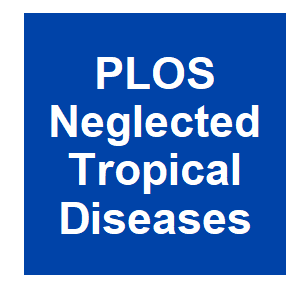
|
Wolbachia-mediated resistance to Zika virus infection in Aedes aegypti is dominated by diverse transcriptional regulation and weak evolutionary pressuresE. C. Boehm, A. S. Jaeger, H. J. Ries, D. Castañeda, A. M. Weiler, C. C. Valencia, J. Weger-Lucarelli, G. D. Ebel, S. L. O’Connor, T. C. Friedrich, M. Zamanian and M. T. Aliota, PLOS Neglected Tropical Diseases, 17:e0011674. 2023.
A promising candidate for arbovirus control and prevention relies on replacing arbovirus-susceptible Aedes aegypti populations with mosquitoes that have been colonized by the intracellular bacterium Wolbachia and thus have a reduced capacity to transmit arboviruses. This reduced ... Keywords: cytoplasmic incompatibility, Drosophila simulans, mechanisms, spermiogenesis, wolbachia |

|
Supergenes as drivers of ant evolutionM. Chapuisat, Myrmecological News, 33:1-18. 2023.
Ants show striking diversity in social organization, raising major questions on the proximate and ultimate causes of such variation. The shift from one-queen (= monogyne) societies to multi-queen (= polygyne) societies has long been viewed as a phenotypically plastic response to ... Keywords: cytoplasmic incompatibility, Drosophila simulans, mechanisms, spermiogenesis, wolbachia |

|
A natural gene drive element confers speciation in riceY. Li, S. Liu and R. Shen, Chinese Science Bulletin, 68:3400-3402. 2023.
For a long time, although many important advances have been made in the field of rice hybrid sterility, the specific molecular mechanism behind the "killer-protector"/ "poison-antidote" model has been unclear. Recently, the team of Academician Wan Jianmin of Nanjing Agricultural ... Keywords: cytoplasmic incompatibility, Drosophila simulans, mechanisms, spermiogenesis, wolbachia |

|
Wolbachia Induces Structural Defects Harmful to Drosophila simulans Riverside Spermiogenesis.M. G. Riparbelli, A. Pratelli and G. Callaini, Cells, 12. 2023.
The relationship between cytoplasmic incompatibility and the obligate intracellular alphaproteobacteria Wolbachia has for a long time been reported. Although the molecular mechanisms responsible for this reproductive alteration are beginning to be understood, the effects of ... Keywords: cytoplasmic incompatibility, Drosophila simulans, mechanisms, spermiogenesis, wolbachia |
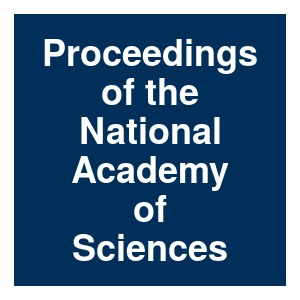
|
Mimicking superinfection exclusion disrupts alphavirus infection and transmission in the yellow fever mosquito Aedes aegyptiReitmayer, Christine M. Levitt, Emily Basu, Sanjay Atkinson, Barry Fragkoudis, Rennos Merits, Andres Lumley, Sarah Larner, Will Diaz, Adriana V. Rooney, Sara Thomas, Callum J. E. von Wyschetzki, Katharina Rausalu, Kai Alphey, Luk, Proceedings of the National Academy of Sciences, 120:e2303080120. 2023.
Multiple viruses, including pathogenic viruses, bacteriophages, and even plant viruses, cause a phenomenon termed superinfection exclusion whereby a currently infected cell is resistant to secondary infection by the same or a closely related virus. In alphaviruses, this process ... Keywords: cytoplasmic incompatibility, Drosophila simulans, mechanisms, spermiogenesis, wolbachia |

|
New perspectives on the causes and consequences of male meiotic driveCourret, Cécile Wei, Xiaolu Larracuente, Amanda M., Current Opinion in Genetics & Development, 2023.
Gametogenesis is vulnerable to selfish genetic elements that bias their transmission to the next generation by cheating meiosis. These so-called meiotic drivers are widespread in plants, animals, and fungi and can impact genome evolution. Here, we summarize recent progress on the ... Keywords: cytoplasmic incompatibility, Drosophila simulans, mechanisms, spermiogenesis, wolbachia |

|
Meiotic segregation and post-meiotic drive of the Festuca pratensis B chromosomeR. Ebrahimzadegan, J. Fuchs, J. Chen, V. Schubert, A. Meister, A. Houben and G. Mirzaghaderi, Chromosome Research, 31:26. 2023.
In many species, the transmission of B chromosomes (Bs) does not follow the Mendelian laws of equal segregation and independent assortment. This deviation results in transmission rates of Bs higher than 0.5, a process known as “chromosome drive”. Here, we studied the behavior ... Keywords: cytoplasmic incompatibility, Drosophila simulans, mechanisms, spermiogenesis, wolbachia |

|
Female meiotic drive in plants: mechanisms and dynamicsF. Finseth, Current Opinion in Genetics and Development, 82:102101. 2023.
Female meiosis is fundamentally asymmetric, creating an arena for genetic elements to compete for inclusion in the egg to maximize their transmission. Centromeres, as mediators of chromosomal segregation, are prime candidates to evolve via ‘female meiotic drive’. According to ... Keywords: cytoplasmic incompatibility, Drosophila simulans, mechanisms, spermiogenesis, wolbachia |

|
Meiotic drive does not impede success in sperm competition in the stalk-eyed fly, Teleopsis dalmanniS. Bates, L. Meade and A. Pomiankowski, Evolution, 2023.
Male X-linked meiotic drive systems, which cause the degeneration of Y-bearing sperm, are common in the Diptera. Sperm killing is typically associated with fitness costs that arise from the destruction of wildtype sperm and collateral damage to maturing drive sperm, resulting in ... Keywords: cytoplasmic incompatibility, Drosophila simulans, mechanisms, spermiogenesis, wolbachia |

|
Proliferation and dissemination of killer meiotic drive lociE. C. Lai and A. A. Vogan, Current Opinion in Genetics and Development, 82:102100. 2023.
Killer meiotic drive elements are selfish genetic entities that manipulate the sexual cycle to promote their own inheritance via destructive means. Two broad classes are sperm killers, typical of animals and plants, and spore killers, which are present in ascomycete fungi. Killer ... Keywords: cytoplasmic incompatibility, Drosophila simulans, mechanisms, spermiogenesis, wolbachia |
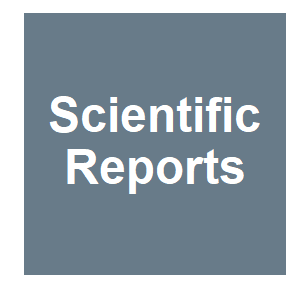
|
Wolbachia has subtle effects on thermal preference in highly inbred Drosophila melanogaster which vary with life stage and environmental conditionsA. Strunov, C. Schoenherr and M. Kapun, Scientific Reports, 13:13792. 2023.
Temperature fluctuations are challenging for ectotherms which are not able to regulate body temperature by physiological means and thus have to adjust their thermal environment via behavior. However, little is yet known about whether microbial symbionts influence thermal ... Keywords: cytoplasmic incompatibility, Drosophila simulans, mechanisms, spermiogenesis, wolbachia |
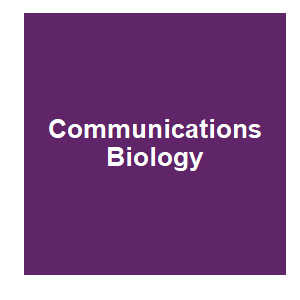
|
wMel Wolbachia alters female post-mating behaviors and physiology in the dengue vector mosquito Aedes aegyptiJ. Osorio, S. Villa-Arias, C. Camargo, L. F. Ramírez-Sánchez, L. M. Barrientos, C. Bedoya, G. Rúa-Uribe, S. Dorus, C. Alfonso-Parra and F. W. Avila, Communications Biology, 6:865. 2023.
Globally invasive Aedes aegypti disseminate numerous arboviruses that impact human health. One promising method to control Ae. aegypti populations is transinfection with Wolbachia pipientis, which naturally infects ~40–52% of insects but not Ae. aegypti. Transinfection of Ae. ... Keywords: cytoplasmic incompatibility, Drosophila simulans, mechanisms, spermiogenesis, wolbachia |

|
Wolbachia infection at least partially rescues the fertility and ovary defects of several new Drosophila melanogaster bag of marbles protein-coding mutantsW. Miwa and F. A. Charles, bioRxiv, 2023.03.20.532813. 2023.
The D. melanogaster protein coding gene bag of marbles (bam) plays a key role in early male and female reproduction by forming complexes with partner proteins to promote differentiation in gametogenesis. Like another germline gene, Sex lethal, bam genetically interacts with the ... Keywords: cytoplasmic incompatibility, Drosophila simulans, mechanisms, spermiogenesis, wolbachia |

|
Paternal genome elimination: patterns and mechanisms of drive and silencingM. Herbette and L. Ross, Current Opinion in Genetics and Development, 81. 2023.
In thousands of arthropod species, males inherit, but subsequently eliminate the entire haploid genome of their father. However, why this peculiar reproductive strategy evolved repeatedly across diverse species and what mechanisms are involved in paternal genome elimination (PGE) ... Keywords: cytoplasmic incompatibility, Drosophila simulans, mechanisms, spermiogenesis, wolbachia |

|
Susceptibility of Wolbachia mosquito control to temperature shiftsE. P. Caragata, Nature Climate Change, 13:767-768. 2023.
Vásquez and colleagues consider the potential impacts of increasing and variable temperatures on Wolbachia-based population-replacement interventions. Previous laboratory experiments have highlighted the temperature-sensitive nature of Wolbachia, with high average daily ... Keywords: cytoplasmic incompatibility, Drosophila simulans, mechanisms, spermiogenesis, wolbachia |
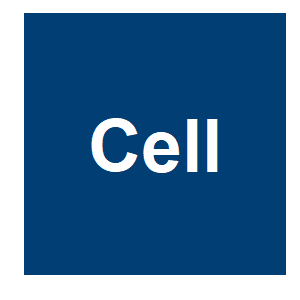
|
A natural gene drive system confers reproductive isolation in riceC. Wang, J. Wang, J. Lu, Y. Xiong, Z. Zhao, X. Yu, X. Zheng, J. Li, Q. Lin, Y. Ren, Y. Hu, X. He, C. Li, Y. Zeng, R. Miao, M. Guo, B. Zhang, Y. Zhu, Y. Zhang, W. Tang, Y. Wang, B. Hao, Q. Wang, S. Cheng, X. He, B. Yao, J. Gao, X. Zhu, H. Yu, Y. Wang, Y. S, Cell, 2023.
Hybrid sterility restricts the utilization of superior heterosis of indica-japonica inter-subspecific hybrids. In this study, we report the identification of RHS12, a major locus controlling male gamete sterility in indica-japonica hybrid rice. We show that RHS12 consists of two ... Keywords: cytoplasmic incompatibility, Drosophila simulans, mechanisms, spermiogenesis, wolbachia |

|
Teosinte Pollen Drive guides maize domestication and evolution by RNAiB. Berube , E. Ernst, J. Cahn, B. Roche, C. d. S. Alves, A. Scheben, A. Siepel, J. Ross-Ibarra, J. Kermicle and R. Martienssen, bioRxiv, 2023.07.12.548689. 2023.
Meiotic drivers subvert Mendelian expectations by manipulating reproductive development to bias their own transmission. Chromosomal drive typically functions in asymmetric female meiosis, while gene drive is normally postmeiotic and typically found in males. Using single molecule ... Keywords: cytoplasmic incompatibility, Drosophila simulans, mechanisms, spermiogenesis, wolbachia |
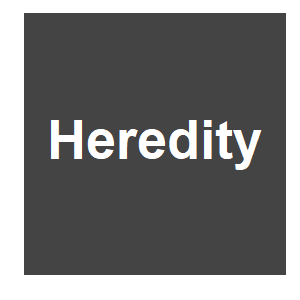
|
N. Wybouw, E. Van Reempts, J. Zarka, F. Zélé and D. Bonte, Heredity, 2023.
Maternally transmitted symbionts such as Wolbachia can alter sex allocation in haplodiploid arthropods. By biasing population sex ratios towards females, these changes in sex allocation may facilitate the spread of symbionts. In contrast to symbiont-induced cytoplasmic ... Keywords: cytoplasmic incompatibility, Drosophila simulans, mechanisms, spermiogenesis, wolbachia |
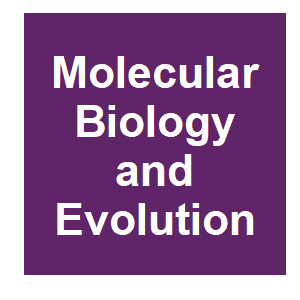
|
The evolutionary history of Drosophila simulans Y chromosomes reveals molecular signatures of resistance to sex ratio meiotic driveC. Courret, D. Ogereau, C. Gilbert, A. M. Larracuente and C. Montchamp-Moreau, Mol Biol Evol, 2023.
The recent evolutionary history of the Y chromosome in Drosophila simulans, a worldwide species of Afrotropical origin, is closely linked to that of X-linked meiotic drivers (Paris system). The spread of the Paris drivers in natural populations has elicited the selection of drive ... Keywords: cytoplasmic incompatibility, Drosophila simulans, mechanisms, spermiogenesis, wolbachia |

|
Impacts of sex ratio meiotic drive on genome structure and function in a stalk-eyed flyJ. A. Reinhardt, R. H. Baker, A. V. Zimin, C. Ladias, K. A. Paczolt, J. H. Werren, C. Y. Hayashi and G. S. Wilkinson, Genome Biology Evolution, 2023.
Stalk-eyed flies in the genus Teleopsis carry selfish genetic elements that induce sex ratio meiotic drive (SR) and impact the fitness of male and female carriers. Here, we assemble and describe a chromosome-level genome assembly of the stalk-eyed fly, Teleopsis dalmanni, to ... Keywords: cytoplasmic incompatibility, Drosophila simulans, mechanisms, spermiogenesis, wolbachia |

|
Do sex-linked male meiotic drivers contribute to intrinsic hybrid incompatibilities? Recent empirical studies from flies and rodentsJ. Kitano and K. Yoshida, Current Opinion in Genetics and Development, 81:102068. 2023.
Intrinsic hybrid incompatibility is one of the important isolating barriers between species. In organisms with sex chromosomes, intrinsic hybrid incompatibility often follows two rules: Haldane’s rule and large-X effects. One explanation for these two rules is that sex ... Keywords: cytoplasmic incompatibility, Drosophila simulans, mechanisms, spermiogenesis, wolbachia |

|
Regulatory logic of endogenous RNAi in silencing de novo genomic conflictsJ. Vedanayagam, C. J. Lin, R. Papareddy, M. Nodine, A. S. Flynt, J. Wen and E. C. Lai, PLOS Genetics, 19:e1010787. 2023.
Although the biological utilities of endogenous RNAi (endo-RNAi) have been largely elusive, recent studies reveal its critical role in the non-model fruitfly Drosophila simulans to suppress selfish genes, whose unchecked activities can severely impair spermatogenesis. In ... Keywords: cytoplasmic incompatibility, Drosophila simulans, mechanisms, spermiogenesis, wolbachia |

|
Modeling emergence of Wolbachia toxin-antidote protein functions with an evolutionary algorithmJ. Beckmann, J. Gillespie and D. Tauritz, Front Microbiol, 14:1116766. 2023.
Evolutionary algorithms (EAs) simulate Darwinian evolution and adeptly mimic natural evolution. Most EA applications in biology encode high levels of abstraction in top-down population ecology models. In contrast, our research merges protein alignment algorithms from ... Keywords: cytoplasmic incompatibility, Drosophila simulans, mechanisms, spermiogenesis, wolbachia |

|
Essential and recurrent roles for hairpin RNAs in silencing de novo sex chromosome conflict in Drosophila simulansJ. Vedanayagam, M. Herbette, H. Mudgett, C. J. Lin, C. M. Lai, C. McDonough-Goldstein, S. Dorus, B. Loppin, C. Meiklejohn, R. Dubruille and E. C. Lai, PLoS Biol, 21:e3002136. 2023.
Meiotic drive loci distort the normally equal segregation of alleles, which benefits their own transmission even in the face of severe fitness costs to their host organism. However, relatively little is known about the molecular identity of meiotic drivers, their strategies of ... Keywords: cytoplasmic incompatibility, Drosophila simulans, mechanisms, spermiogenesis, wolbachia |

|
Molecular Biology of Cytoplasmic Incompatibility Caused by Wolbachia EndosymbiontsM. Hochstrasser, Annual Review of Microbiology, 2023.
Among endosymbiotic bacteria living within eukaryotic cells, Wolbachia is exceptionally widespread, particularly in arthropods. Inherited through the female germline, it has evolved ways to increase the fraction of bacterially infected offspring by inducing parthenogenesis, ... Keywords: cytoplasmic incompatibility, Drosophila simulans, mechanisms, spermiogenesis, wolbachia |

|
Cell biology: Selfish B chromosomes unleashed by a dysfunctional chromosome segregation systemP. Ferree, Current Biology, 33:R431-R434. 2023.
A study in the fruit fly Drosophila melanogaster shows that a defective chromosome segregation system allows non-essential B chromosomes to transmit at higher-than-Mendelian frequencies. Higher eukaryotes harbor a range of different selfish genetic elements (SGEs). One type of ... Keywords: cytoplasmic incompatibility, Drosophila simulans, mechanisms, spermiogenesis, wolbachia |

|
Wolbachia -induced inhibition of O’nyong nyong virus in Anopheles mosquitoes is mediated by Toll signaling and modulated by cholesterolS. Pujhari, G. L. Hughes, N. Pakpour, Y. Suzuki and J. L. Rasgon, bioRxiv, 10.1101/2023.05.31.543096. 2023.Enhanced host immunity and competition for metabolic resources are two main competing hypotheses for the mechanism of Wolbachia -mediated pathogen inhibition in arthropods. Using an Anopheles mosquito - somatic Wolbachia infection - O'nyong nyong virus (ONNV) model, we ... Keywords: cytoplasmic incompatibility, Drosophila simulans, mechanisms, spermiogenesis, wolbachia |
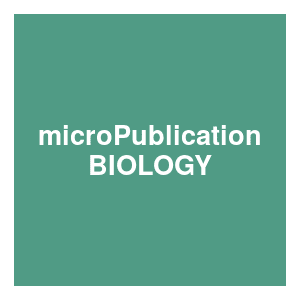
|
Wolbachia genetically interacts with the bag of marbles germline stem cell gene in male D. melanogasterM. Wenzel and C. F. Aquadro, MicroPubl Biol, 2023.
The bacterial endosymbiont Wolbachia manipulates reproduction of its arthropod hosts to promote its own maternal vertical transmission. In female D. melanogaster , Wolbachia has been shown to genetically interact with three key reproductive genes ( bag of marbles ( bam ) , ... Keywords: cytoplasmic incompatibility, Drosophila simulans, mechanisms, spermiogenesis, wolbachia |

|
Combined actions of bacteriophage-encoded genes in Wolbachia-induced male lethalityH. Arai, H. Anbutsu, Y. Nishikawa, M. Kogawa, K. Ishii, M. Hosokawa, S. R. Lin, M. Ueda, M. Nakai, Y. Kunimi, T. Harumoto, D. Kageyama, H. Takeyama and M. N. Inoue, iScience, 26:106842. 2023.
Some Wolbachia endosymbionts induce male killing, whereby male offspring of infected females are killed during development; however, the origin and diversity of the underlying mechanisms remain unclear. In this study, we identified a 76 kbp prophage region specific to ... Keywords: cytoplasmic incompatibility, Drosophila simulans, mechanisms, spermiogenesis, wolbachia |

|
One strain may hide another: Cryptic male-killing WolbachiaE. A. Hornett and G. D. D. Hurst, PLOS Biology, 21:e3002076. 2023.
While heritable symbionts are common in insects, strains that act as male-killers are considered rare. This Primer explores a new study in PLOS Biology which reveals a novel male-killer hidden by co-infection and host resistance, highlighting the complexity of host-microbial ... Keywords: cytoplasmic incompatibility, Drosophila simulans, mechanisms, spermiogenesis, wolbachia |

|
Modelling Emergence of Wolbachia Toxin-Antidote Protein Functions with an Evolutionary AlgorithmJ. Beckmann, J. Gillespie and D. Tauritz, bioRxiv, 2023.
Evolutionary algorithms (EAs) simulate Darwinian evolution and adeptly mimic natural evolution. Most EA applications in biology encode high levels of abstraction in top-down ecological population models. In contrast, our research merges protein alignment algorithms from ... Keywords: cytoplasmic incompatibility, Drosophila simulans, mechanisms, spermiogenesis, wolbachia |
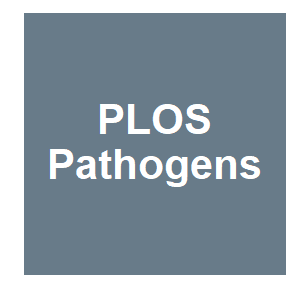
|
Functional analysis of Wolbachia Cid effectors unravels cooperative interactions to target host chromatin during replicationK. Terretaz, B. Horard, M. Weill, B. Loppin and F. Landmann, PLOS Pathogens, 19:e1011211. 2023.
Wolbachia are common bacteria among terrestrial arthropods. These endosymbionts transmitted through the female germline manipulate their host reproduction through several mechanisms whose most prevalent form called Cytoplasmic Incompatibility -CI- is a conditional sterility ... Keywords: cytoplasmic incompatibility, Drosophila simulans, mechanisms, spermiogenesis, wolbachia |
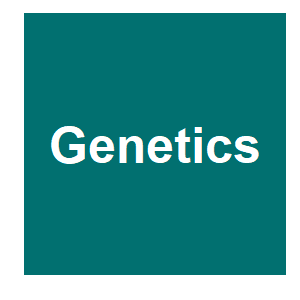
|
Distinct Wolbachia localization patterns in oocytes of diverse host species reveal multiple strategies of maternal transmissionY. A. Radousky, M. T. J. Hague, S. Fowler, E. Paneru, A. Codina, C. Rugamas, G. Hartzog, B. S. Cooper and W. Sullivan, Genetics, 2023.
A broad array of endosymbionts radiate through host populations via vertical transmission, yet much remains unknown concerning the cellular basis, diversity and routes underlying this transmission strategy. Here we address these issues, by examining the cellular distributions of ... Keywords: cytoplasmic incompatibility, Drosophila simulans, mechanisms, spermiogenesis, wolbachia |

|
Analysing inhibition of dengue virus in Wolbachia-infected mosquito cells following the removal of WolbachiaM. Hussain, K. Etebari and S. Asgari, Virology, 581:48-55. 2023.
Wolbachia pipientis is known to block replication of positive sense RNA viruses. Previously, we created an Aedes aegypti Aag2 cell line (Aag2.wAlbB) transinfected with the wAlbB strain of Wolbachia and a matching tetracycline-cured Aag2.tet cell line. While dengue virus (DENV) ... Keywords: cytoplasmic incompatibility, Drosophila simulans, mechanisms, spermiogenesis, wolbachia |

|
Effects of Wolbachia on Transposable Element Expression Vary Between Drosophila melanogaster Host GenotypesA. T. Eugénio, M. S. P. Marialva and P. Beldade, Genome Biology Evolution, 15. 2023.
Transposable elements (TEs) are repetitive DNA sequences capable of changing position in host genomes, thereby causing mutations. TE insertions typically have deleterious effects but they can also be beneficial. Increasing evidence of the contribution of TEs to adaptive evolution ... Keywords: cytoplasmic incompatibility, Drosophila simulans, mechanisms, spermiogenesis, wolbachia |

|
Genome evolution of dengue virus serotype 1 under selection by Wolbachia pipientis in Aedes aegypti mosquitoesD. Thi Hue Kien, K. Edenborough, D. da Silva Goncalves, T. Thuy Vi, E. Casagrande, H. Thi Le Duyen, V. Thi Long, L. Thi Dui, V. Thi Tuyet Nhu, N. Thi Giang, H. Thi Xuan Trang, E. Lee, I. a. Donovan-Banfield, H. Thi Thuy Van, N. Minh Nguyet, N. Thanh Phong, Virus Evolution, 9:vead016. 2023.
The introgression of antiviral strains of Wolbachia into Aedes aegypti mosquito populations is a public health intervention for the control of dengue. Plausibly, dengue virus (DENV) could evolve to bypass the antiviral effects of Wolbachia and undermine this approach. Here, we ... Keywords: cytoplasmic incompatibility, Drosophila simulans, mechanisms, spermiogenesis, wolbachia |

|
Wbm0076, a candidate effector protein of the Wolbachia endosymbiont of Brugia malayi, disrupts eukaryotic actin dynamicsM. K. Mills, L. G. McCabe, E. M. Rodrigue, K. F. Lechtreck and V. J. Starai, PLoS Pathogens, 19:e1010777. 2023.
Brugia malayi, a parasitic roundworm of humans, is colonized by the obligate intracellular bacterium, Wolbachia pipientis. The symbiosis between this nematode and bacterium is essential for nematode reproduction and long-term survival in a human host. Therefore, identifying ... Keywords: cytoplasmic incompatibility, Drosophila simulans, mechanisms, spermiogenesis, wolbachia |

|
Expansion and loss of sperm nuclear basic protein genes in Drosophila correspond with genetic conflicts between sex chromosomesC.-H. Chang, I. Mejia Natividad and H. S. Malik, eLife, 12:e85249. 2023.Many animal species employ sperm nuclear basic proteins (SNBPs) or protamines to package sperm genomes tightly. SNBPs vary across animal lineages and evolve rapidly in mammals. We used a phylogenomic approach to investigate SNBP diversification in Drosophila species. We found ... Keywords: cytoplasmic incompatibility, Drosophila simulans, mechanisms, spermiogenesis, wolbachia |

|
Expansion and loss of sperm nuclear basic protein genes in Drosophila correspond with genetic conflicts between sex chromosomesC.-H. Chang, I. Mejia Natividad and H. S. Malik, eLife, 12:e85249. 2023.
Many animal species employ sperm nuclear basic proteins (SNBPs) or protamines to package sperm genomes tightly. SNBPs vary across animal lineages and evolve rapidly in mammals. We used a phylogenomic approach to investigate SNBP diversification in Drosophila species. We found ... Keywords: cytoplasmic incompatibility, Drosophila simulans, mechanisms, spermiogenesis, wolbachia |
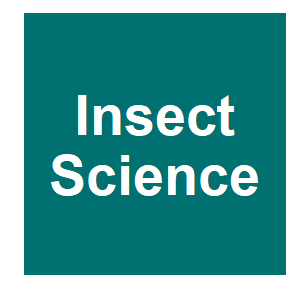
|
NDUFA8 potentially rescues Wolbachia-induced cytoplasmic incompatibility in Laodelphax striatellusJ. Chen, M. K. Wang, Q. X. Xie, X. L. Bing, T. P. Li and X. Y. Hong, Insect Sci, 2023.
The endosymbiont Wolbachia manipulates host reproduction by several strategies, one of the most important of which is cytoplasmic incompatibility (CI). CI can be rescued when Wolbachia-infected (WI) males mate with females infected with the same Wolbachia strain. However, the ... Keywords: cytoplasmic incompatibility, Drosophila simulans, mechanisms, spermiogenesis, wolbachia |

|
Investigating Wolbachia symbiont-mediated host protection against a bacterial pathogen using a natural Wolbachia nuclear insertC. Prigot-Maurice, B. Lheraud, S. Guéritault, S. Beltran-Bech, R. Cordaux, J. Peccoud and C. Braquart-Varnier, Journal of Invertebrate Pathology, 197:107893. 2023.
Wolbachia bacterial endosymbionts provide protection against pathogens in various arthropod species but the underlying mechanisms remain misunderstood. By using a natural Wolbachia nuclear insert (f-element) in the isopod Armadillidium vulgare, we explored whether Wolbachia ... Keywords: cytoplasmic incompatibility, Drosophila simulans, mechanisms, spermiogenesis, wolbachia |

|
Pangenomic analysis of Wolbachia provides insight into the evolution of host adaptation and cytoplasmic incompatibility factor genesB. Liu, Y. S. Ren, C. Y. Su, Y. Abe and D. H. Zhu, Frontiers in Microbiology, 14:1084839. 2023.
INTRODUCTION: The genus Wolbachia provides a typical example of intracellular bacteria that infect the germline of arthropods and filarial nematodes worldwide. Their importance as biological regulators of invertebrates, so it is particularly important to study the evolution, ... Keywords: cytoplasmic incompatibility, Drosophila simulans, mechanisms, spermiogenesis, wolbachia |

|
Both male and female meiosis contribute to non-Mendelian inheritance of parental chromosomes in interspecific plant hybrids (Lolium x Festuca)J. Majka, M. Glombik, A. Dolezalova, J. Knerova, M. T. M. Ferreira, Z. Zwierzykowski, M. Duchoslav, B. Studer, J. Dolezel, J. Bartos and D. Kopecky, NEW PHYTOLOGIST, 2023.
Some interspecific plant hybrids show unequal transmission of chromosomes from parental genomes to the successive generations. It has been suggested that this is due to a differential behavior of parental chromosomes during meiosis. However, underlying mechanism is unknown. We ... Keywords: cytoplasmic incompatibility, Drosophila simulans, mechanisms, spermiogenesis, wolbachia |
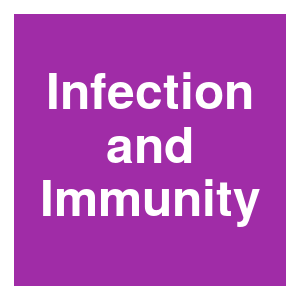
|
Wolbachia Promotes Its Own Uptake by Host CellsL. B. Nevalainen, E. M. Layton and I. L. G. Newton, Infection and Immunity, e0055722. 2023.
Wolbachia pipientis is an incredibly widespread bacterial symbiont of insects, present in an estimated 25 to 52% of species worldwide. Wolbachia is faithfully maternally transmitted both in a laboratory setting and in the wild. In an established infection, Wolbachia is primarily ... Keywords: cytoplasmic incompatibility, Drosophila simulans, mechanisms, spermiogenesis, wolbachia |

|
Wolbachia RNase HI contributes to virus blocking in the mosquito Aedes aegyptiM. Hussain, G. Zhang, M. Leitner, L. M. Hedges and S. Asgari, iScience, 26:105836. 2023.
The endosymbiotic bacterium Wolbachia pipientis blocks replication of several arboviruses in transinfected Aedes aegypti mosquitoes. However, the mechanism of virus blocking remains poorly understood. Here, we characterized an RNase HI gene from Wolbachia, which is rapidly ... Keywords: cytoplasmic incompatibility, Drosophila simulans, mechanisms, spermiogenesis, wolbachia |
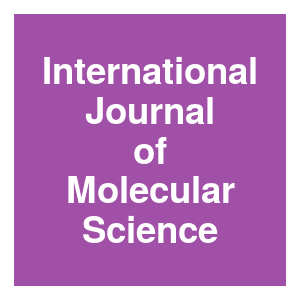
|
Bypassing Mendel’s First Law: Transmission Ratio Distortion in MammalsG. Friocourt, A. Perrin, P. A. Saunders, E. Nikalayevich, C. Voisset, C. Coutton, G. Martinez and F. Morel, International Journal Molecular Sciences, 24. 2023.
Mendel's law of segregation states that the two alleles at a diploid locus should be transmitted equally to the progeny. A genetic segregation distortion, also referred to as transmission ratio distortion (TRD), is a statistically significant deviation from this rule. TRD has ... Keywords: cytoplasmic incompatibility, Drosophila simulans, mechanisms, spermiogenesis, wolbachia |

|
Single-cell transcriptome sequencing reveals Wolbachia-mediated modification in early stages of Drosophila spermatogenesisW. Dou, B. Sun, Y. Miao, D. Huang and J. Xiao, Proceedings of the Royal Society B: Biological Sciences, 290:20221963. 2023.
Wolbachia are the most widely distributed intracellular bacteria, and their most common effect on host phenotype is cytoplasmic incompatibility (CI). A variety of models have been proposed to decipher the molecular mechanism of CI, among which the host modification (HM) model ... Keywords: cytoplasmic incompatibility, Drosophila simulans, mechanisms, spermiogenesis, wolbachia |

|
Single-cell transcriptome sequencing reveals Wolbachia-mediated modification in early stages of Drosophila spermatogenesisW. Dou, B. Sun, Y. Miao, D. Huang and J. Xiao, Proceedings of the Royal Society B: Biological Sciences, 290:20221963. 2023.
Wolbachia are the most widely distributed intracellular bacteria, and their most common effect on host phenotype is cytoplasmic incompatibility (CI). A variety of models have been proposed to decipher the molecular mechanism of CI, among which the host modification (HM) model ... Keywords: cytoplasmic incompatibility, Drosophila simulans, mechanisms, spermiogenesis, wolbachia |

|
P-element invasions in Drosophila erecta; shed light on the establishment of host control over a transposable elementD. Selvaraju, F. Wierzbicki and R. Kofler, bioRxiv, 2022.12.22.521571. 2022.
To prevent the spread of transposable elements (TEs) hosts have developed sophisticated defence mechanisms. In mammals and invertebrates this defence mechanism operates through piRNAs. It is unclear how piRNA-based defences are established against invading TEs. According to the ... Keywords: cytoplasmic incompatibility, Drosophila simulans, mechanisms, spermiogenesis, wolbachia |

|
How Selfish Genes Succeed: Critical Insights Uncovered About Dangerous DNASTOWERS INSTITUTE FOR MEDICAL RESEARCH, SciTechDaily, 2022.
New findings from the Stowers Institute for Medical Research uncover critical insights about how a dangerous selfish gene—considered to be a parasitic portion of DNA—functions and survives. Understanding this dynamic is a valuable resource for the broader community studying ... Keywords: cytoplasmic incompatibility, Drosophila simulans, mechanisms, spermiogenesis, wolbachia |

|
A Natural Fungal Gene Drive Enacts Killing via DNA DisruptionA. S. Urquhart and D. M. Gardiner, mBio, e0317322. 2022.
Fungal spore killers are a class of selfish genetic elements that positively bias their own inheritance by killing non-inheriting gametes following meiosis. As killing takes place specifically within the developing fungal ascus, a tissue which is experimentally difficult to ... Keywords: cytoplasmic incompatibility, Drosophila simulans, mechanisms, spermiogenesis, wolbachia |

|
Wolbachia endosymbionts manipulate GSC self-renewal and differentiation to enhance host fertilityS. L. Russell, J. R. Castillo and W. T. Sullivan, bioRxiv, 2022.12.15.520626. 2022.
The alphaproteobacterium Wolbachia pipientis infects thousands of arthropod and nematode species worldwide, making it a key target for host biological control. Wolbachia-driven host reproductive manipulations, such as cytoplasmic incompatibility (CI), are often credited for ... Keywords: cytoplasmic incompatibility, Drosophila simulans, mechanisms, spermiogenesis, wolbachia |

|
Cell-based analysis reveals that sex-determining gene signals in Ostrinia are pivotally changed by male-killing WolbachiaB. Herran, T. N. Sugimoto, K. Watanabe, S. Imanishi, T. Tsuchida, T. Matsuo, Y. Ishikawa and D. Kageyama, PNAS Nexus, pgac293. 2022.
Wolbachia, a maternally transmitted bacterium, shows male-killing, an adaptive phenotype for cytoplasmic elements, in various arthropod species during the early developmental stages. In lepidopteran insects, lethality of males is accounted for by improper dosage compensation in ... Keywords: cytoplasmic incompatibility, Drosophila simulans, mechanisms, spermiogenesis, wolbachia |

|
How selfish genes succeedStowers Institute for Medical Research, ScienceDaily, 2022.
A new study reveals how a selfish gene in yeast uses a poison-antidote strategy that enables its function and likely has facilitated its long-term evolutionary success. This strategy is an important addition for scientists studying similar systems including teams that are ... Keywords: cytoplasmic incompatibility, Drosophila simulans, mechanisms, spermiogenesis, wolbachia |

|
Deregulation of Y-linked protamine-like genes in sex chromosome-biased spermatid demiseJ. I. Park, G. W. Bell and Y. M. Yamashita, bioRxiv, 2022.
Meiotic drive is a phenomenon wherein a genetic element achieves a higher rate of transmission than dictated by Mendelian segregation (1-3). One proposed mechanism for meiotic drivers to achieve biased transmission is by sabotaging essential processes of gametogenesis (e.g. ... Keywords: cytoplasmic incompatibility, Drosophila simulans, mechanisms, spermiogenesis, wolbachia |

|
Determining the landscape of resistance to gene drives in the malaria mosquitoI. Morianou, Imperial College London, 2022.
Gene drives are engineered selfish genetic elements with the potential to spread throughout entire insect populations for sustainable vector control. Recently, a gene drive was shown to eliminate caged populations of the malaria mosquito by targeting the highly conserved ... Keywords: cytoplasmic incompatibility, Drosophila simulans, mechanisms, spermiogenesis, wolbachia |

|
Meiotic drive adaptive testes enlargement during early development in the stalk-eyed flyS. L. Bradshaw, L. Meade, J. Tarlton-Weatherall and A. Pomiankowski, Biology Letters, 18:20220352. 2022.
The sex ratio (SR) X-linked meiotic drive system in stalk-eyed flies destroys Y-bearing sperm. Unlike other SR systems, drive males do not suffer fertility loss. They have greatly enlarged testes which compensate for gamete killing. We predicted that enlarged testes arise from ... Keywords: cytoplasmic incompatibility, Drosophila simulans, mechanisms, spermiogenesis, wolbachia |

|
A CRISPR endonuclease gene drive reveals distinct mechanisms of inheritance biasS. A. N. Verkuijl, E. Gonzalez, M. Li, J. X. D. Ang, N. P. Kandul, M. A. E. Anderson, O. S. Akbari, M. B. Bonsall and L. Alphey, Nature Communications, 13:7145. 2022.
CRISPR/Cas gene drives can bias transgene inheritance through different mechanisms. Homing drives are designed to replace a wild-type allele with a copy of a drive element on the homologous chromosome. In Aedes aegypti, the sex-determining locus is closely linked to the white ... Keywords: cytoplasmic incompatibility, Drosophila simulans, mechanisms, spermiogenesis, wolbachia |

|
A Wolbachia factor for male killing in lepidopteran insectsS. Katsuma, K. Hirota, N. Matsuda-Imai, T. Fukui, T. Muro, K. Nishino, H. Kosako, K. Shoji, H. Takanashi, T. Fujii, S.-i. Arimura and T. Kiuchi, Nature Communications, 13:6764. 2022.
Bacterial symbionts, such as Wolbachia species, can manipulate the sexual development and reproduction of their insect hosts. For example, Wolbachia infection induces male-specific death in the Asian corn borer Ostrinia furnacalis by targeting the host factor Masculinizer (Masc), ... Keywords: cytoplasmic incompatibility, Drosophila simulans, mechanisms, spermiogenesis, wolbachia |

|
Wolbachia inhibits ovarian formation and increases blood feeding rate in female Aedes aegyptiM.-J. Lau, P. A. Ross, N. M. Endersby-Harshman, Q. Yang and A. A. Hoffmann, PLOS Neglected Tropical Diseases, 16:e0010913. 2022.
Author summary Wolbachia bacteria reduce the transmission of dengue and other arboviruses transmitted by their mosquito hosts once they have invaded host populations. This invasion process is being undertaken in Aedes aegypti mosquito populations throughout the world but can be ... Keywords: cytoplasmic incompatibility, Drosophila simulans, mechanisms, spermiogenesis, wolbachia |

|
Gene drive by Fusarium SKC1 is dependent on its competing alleleJ. M. Lohmar, N. A. Rhoades, T. M. Hammond and D. W. Brown, Fungal Genetics and Biology, 163:103749. 2022.
The Fusarium verticillioides SKC1 gene driver is transmitted to offspring in a biased manner through spore killing. The mechanism that allows SKC1 to kill non-SKC1 offspring while sparing others is poorly understood. Here we report that gene drive by SKC1 is dependent on SKC1's ... Keywords: cytoplasmic incompatibility, Drosophila simulans, mechanisms, spermiogenesis, wolbachia |

|
Wolbachia action in the sperm produces developmentally deferred chromosome segregation defects during the Drosophila mid-blastula transitionB. Warecki, S. W. A. Titen, M. S. Alam, G. Vega, N. Lemseffer, K. Hug, et al., eLife, 11:e81292. 2022.
Wolbachia, a vertically transmitted endosymbiont infecting many insects, spreads rapidly through uninfected populations by a mechanism known as cytoplasmic incompatibility (CI). In CI, a paternally delivered modification of the sperm leads to chromatin defects and lethality ... Keywords: cytoplasmic incompatibility, Drosophila simulans, mechanisms, spermiogenesis, wolbachia |

|
Wolbachia strain wAlbB remains stable in Aedes aegypti over 15 years but exhibits genetic background-dependent variation in virus blockingX. Liang, C. H. Tan, Q. Sun, M. Zhang, P. J. Wong, M. I. Li, et al., PNAS Nexus, 2022.
The ability of the maternally transmitted endosymbiotic bacterium Wolbachia to induce cytoplasmic incompatibility (CI) and virus blocking makes it a promising weapon for combatting mosquito-borne diseases through either suppression or replacement of wild-type populations. Recent ... Keywords: cytoplasmic incompatibility, Drosophila simulans, mechanisms, spermiogenesis, wolbachia |

|
Genome sequencing and comparative analysis of Wolbachia strain wAlbA reveals Wolbachia-associated plasmids are commonJ. Martinez, T. H. Ant, S. M. Murdochy, L. Tong, A. da Silva Filipe and S. P. Sinkins, PLOS Genetics, 18:e1010406. 2022.
Wolbachia is the most common bacterial symbiont of arthropods, being found in about half of terrestrial species around the globe. It is transmitted from mother to offspring, can spread rapidly by inducing various forms of reproductive parasitism and often provides protection ... Keywords: cytoplasmic incompatibility, Drosophila simulans, mechanisms, spermiogenesis, wolbachia |

|
Meiotic drive does not impede success in sperm competition in the stalk-eyed fly, Teleopsis dalmanniS. Bates, L. Meade and A. Pomiankowski, bioRxiv, 2022.
Meiotic drive genes are selfish genetic elements that distort Mendelian patterns of inheritance to bias transmission in their favour. We use the stalk-eyed fly, Teleopsis dalmanni, to investigate the fitness effects associated with a meiotic drive gene called Sex Ratio (SR), ... Keywords: cytoplasmic incompatibility, Drosophila simulans, mechanisms, spermiogenesis, wolbachia |
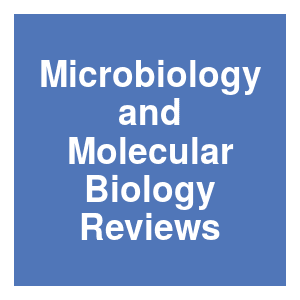
|
Enforcement of Postzygotic Species Boundaries in the Fungal KingdomJ. Y. Chou, P. C. Hsu and J. Y. Leu, Microbiology and Molecular Biology Reviews, 2022.
Understanding the molecular basis of speciation is a primary goal in evolutionary biology. The formation of the postzygotic reproductive isolation that causes hybrid dysfunction, thereby reducing gene flow between diverging populations, is crucial for speciation. Using various ... Keywords: cytoplasmic incompatibility, Drosophila simulans, mechanisms, spermiogenesis, wolbachia |

|
Analysis of Aedes aegypti microRNAs in response to Wolbachia wAlbB infection and their potential role in mosquito longevityC. Bishop, M. Hussain, L. E. Hugo and S. Asgari, Scientific Reports, 12:15245. 2022.
The mosquito Aedes aegypti is the primary vector of a range of medically important viruses including dengue, Zika, West Nile, yellow fever, and chikungunya viruses. The endosymbiotic bacterium Wolbachia pipientis wAlbB strain is a promising biocontrol agent for blocking viral ... Keywords: cytoplasmic incompatibility, Drosophila simulans, mechanisms, spermiogenesis, wolbachia |

|
Comparative Ubiquitome Analysis Reveals Deubiquitinating Effects Induced by Wolbachia Infection in Drosophila melanogasterQ. Zong, B. Mao, H. B. Zhang, B. Wang, W. J. Yu, Z. W. Wang and Y. F. Wang, International Journal Molecular Science, 23. 2022.
The endosymbiotic Wolbachia bacteria frequently cause cytoplasmic incompatibility (CI) in their insect hosts, where Wolbachia-infected males cross with uninfected females, leading to no or fewer progenies, indicating a paternal modification by Wolbachia. Recent studies have ... Keywords: cytoplasmic incompatibility, Drosophila simulans, mechanisms, spermiogenesis, wolbachia |

|
Attempts to use breeding approaches in Aedes aegypti to create lines with distinct and stable relative Wolbachia densitiesA. J. Mejia, L. Jimenez, H. L. C. Dutra, R. Perera and E. A. McGraw, Heredity, 2022.
Wolbachia is an insect endosymbiont being used for biological control in the mosquito Aedes aegypti because it causes cytoplasmic incompatibility (CI) and limits viral replication of dengue, chikungunya, and Zika viruses. While the genetic mechanism of pathogen blocking (PB) is ... Keywords: cytoplasmic incompatibility, Drosophila simulans, mechanisms, spermiogenesis, wolbachia |

|
Isolation of rfk-2 (UV) , a mutation that blocks spore killing by Neurospora Spore killer-3A. Velazquez, E. Webber, D. O'Neil, T. Hammond and N. Rhoades, MicroPublication Biology, 2022.
Neurospora Spore killer-3 ( Sk-3 ) is a selfish genetic element that kills spores to achieve gene drive. Here, to help identify Sk-3’s killer, we performed a genetic screen for required for killing (rfk) mutations (see methods). The genetic screen uses Sk‑3 rskΔ × SkS ... Keywords: cytoplasmic incompatibility, Drosophila simulans, mechanisms, spermiogenesis, wolbachia |

|
cifB-transcript levels largely explain cytoplasmic incompatibility variation across divergent WolbachiaJ. D. Shropshire, E. Hamant, W. R. Conner and B. S. Cooper, PNAS Nexus, 2022.
Divergent hosts often associate with intracellular microbes that influence their fitness. Maternally transmitted Wolbachia bacteria are the most common of these endosymbionts due largely to cytoplasmic incompatibility (CI) that kills uninfected embryos fertilized by ... Keywords: cytoplasmic incompatibility, Drosophila simulans, mechanisms, spermiogenesis, wolbachia |

|
Male-killing-associated bacteriophage WO identified from comparisons of Wolbachia endosymbionts of Homona magnanimaH. Arai, H. Anbutsu, Y. Nishikawa, M. Kogawa, K. Ishii, M. Hosokawa, S.-R. Lin, M. Ueda, M. Nakai, Y. Kunimi, T. Harumoto, D. Kageyama, H. Takeyama and M. N. Inoue, bioRxiv, 2022.
The origin and mechanism of male-killing, an advantageous strategy employed by maternally transmitted symbionts such as Wolbachia, remain unclear. We compared genomes of four Wolbachia strains derived from Homona magnanima, a male-killing strain wHm-t (1.5 Mb), and three ... Keywords: cytoplasmic incompatibility, Drosophila simulans, mechanisms, spermiogenesis, wolbachia |

|
Perplexing dynamics of Wolbachia proteins for cytoplasmic incompatibilityT. Harumoto and T. Fukatsu, PLOS Biology, 20:e3001644. 2022.
The mechanism of symbiont-induced cytoplasmic incompatibility has been a long-lasting mystery. This Primer explores a new study on Wolbachia’s Cif proteins in PLOS Biology that provides supportive evidence for the “Host-Modification Model,” although the alternative ... Keywords: cytoplasmic incompatibility, Drosophila simulans, mechanisms, spermiogenesis, wolbachia |

|
The Cif proteins from Wolbachia prophage WO modify sperm genome integrity to establish cytoplasmic incompatibilityR. Kaur, B. A. Leigh, I. T. Ritchie and S. R. Bordenstein, PLOS Biology, 20:e3001584. 2022.
In Drosophila melanogaster, germline expression of the Wolbachia proteins CifA and CifB causes cytoplasmic incompatibility, but how this impairs male reproduction remains unclear. This study shows how Cif proteins encoded by the endosymbiont prophage invade the fly’s gametic ... Keywords: cytoplasmic incompatibility, Drosophila simulans, mechanisms, spermiogenesis, wolbachia |

|
Expanding the flexibility of genome editing approaches for population control of the malaria mosquitoN. Kranjc, Imperial College London-PhD, 2022.
Discovery and adaptation of CRISPR-Cas systems for genome editing have allowed us to gain an efficient and yet simple tool for genetic manipulation in various fields of molecular biology and biotechnology. One of the most promising applications is the use of CRISPR-Cas9 ... Keywords: cytoplasmic incompatibility, Drosophila simulans, mechanisms, spermiogenesis, wolbachia |

|
Cytoplasmic incompatibility: A Wolbachia toxin–antidote mechanism comes into viewM. Hochstrasser, Current Biology, 32:R287-R289. 2022.
The Wolbachia cidA and cidB genes promote bacterial endosymbiont inheritance through the host female germline. CidB is now shown to load into maturing sperm nuclei. Following fertilization, it disrupts paternal chromosome condensation, triggering embryonic arrest if not countered ... Keywords: cytoplasmic incompatibility, Drosophila simulans, mechanisms, spermiogenesis, wolbachia |

|
Differential viral RNA methylation contributes to pathogen blocking in Wolbachia-colonized arthropodsT. Bhattacharya, L. Yan, J. M. Crawford, H. Zaher, I. L. G. Newton and R. W. Hardy, PLoS Pathogens, 18:e1010393. 2022.
Arthropod endosymbiont Wolbachia pipientis is part of a global biocontrol strategy to reduce the replication of mosquito-borne RNA viruses such as alphaviruses. We previously demonstrated the importance of a host cytosine methyltransferase, DNMT2, in Drosophila and viral RNA as a ... Keywords: cytoplasmic incompatibility, Drosophila simulans, mechanisms, spermiogenesis, wolbachia |

|
Genetic Drive Systems in NatureDavid O'Brochta and Hector Quemada, GeneConvene Global Collaborative, 2022.
Intra genomic genetic conflicts are ubiquitous in nature and have shaped and continue to shape the evolution of plants, animals, and microbes. These conflicts can result in preferential transmission - drive - of genes, various genetic elements, and even whole chromosomes. ... Keywords: cytoplasmic incompatibility, Drosophila simulans, mechanisms, spermiogenesis, wolbachia |

|
Considerations for homology-based DNA repair in mosquitoes: Impact of sequence heterology and donor template sourceJ. X. D. Ang, K. Nevard, R. Ireland, D.-K. Purusothaman, S. A. N. Verkuijl, L. Shackleford, E. Gonzalez, M. A. E. Anderson and L. Alphey, PLOS Genetics, 18:e1010060. 2022.
Author summary The field of genetic control of mosquito vectors has progressed rapidly in recent years, especially in Cas9-based control systems, due to its robustness to elicit a species-specific and dispersive control of mosquito population. To generate a Cas9-based ... Keywords: cytoplasmic incompatibility, Drosophila simulans, mechanisms, spermiogenesis, wolbachia |

|
A-to-I mRNA editing controls spore death induced by a fungal meiotic drive gene in homologous and heterologous expression systemsJ. M. Lohmar, N. A. Rhoades, T. N. Patel, R. H. Proctor, T. M. Hammond and D. W. Brown, Genetics, 2022.
Spore killers are meiotic drive elements that can block development of sexual spores in fungi. In the maize ear rot and mycotoxin-producing fungus Fusarium verticillioides, a spore killer called SkK has been mapped to a 102-kb interval of chromosome V. Here, we show that a gene ... Keywords: cytoplasmic incompatibility, Drosophila simulans, mechanisms, spermiogenesis, wolbachia |

|
Paternal transmission of the Wolbachia CidB toxin underlies cytoplasmic incompatibilityB. Horard, K. Terretaz, A. S. Gosselin-Grenet, H. Sobry, M. Sicard, F. Landmann and B. Loppin, Current Biology, 2022.
Wolbachia are widespread endosymbiotic bacteria that manipulate the reproduction of arthropods through a diversity of cellular mechanisms. In cytoplasmic incompatibility (CI), a sterility syndrome originally discovered in the mosquito Culex pipiens, uninfected eggs fertilized by ... Keywords: cytoplasmic incompatibility, Drosophila simulans, mechanisms, spermiogenesis, wolbachia |

|
A natural fungal gene drive enacts killing through targeting DNAA. S. Urquhart and D. M. Gardiner, bioRxiv, 2022.01.19.477016. 2022.
Fungal spore-killers are a class of selfish genetic elements that positively bias their own inheritance by killing non-inheriting gametes following meiosis. As killing takes place specifically within the developing fungal ascus, a tissue which is experimentally difficult to ... Keywords: cytoplasmic incompatibility, Drosophila simulans, mechanisms, spermiogenesis, wolbachia |
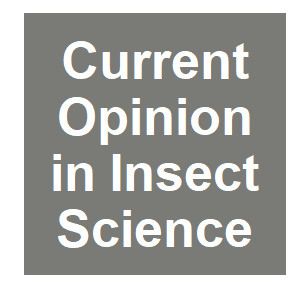
|
From Wolbachia genomics to phenotype: molecular models of cytoplasmic incompatibility must account for the multiplicity of compatibility typesA. Namias, M. Sicard, M. Weill and S. Charlat, Current Opinion in Insect Science, 2021.
Wolbachia endosymbionts commonly induce cytoplasmic incompatibility, making infected males’ sperm lethal to the embryos unless these are rescued by the same bacterium, inherited from their mother. Causal genes were recently identified but two families of mechanistic models are ... Keywords: cytoplasmic incompatibility, Drosophila simulans, mechanisms, spermiogenesis, wolbachia |

|
Nuclear transport genes recurrently duplicate by means of RNA intermediates in Drosophila but not in other insectsA. Mirsalehi, D. N. Markova, M. Eslamieh and E. Betrán, BMC Genomics, 22:876. 2021.
We find that most of the nuclear transport duplications in Drosophila are of a few classes of nuclear transport genes, RNA mediated and fast evolving. We also retrieve many pseudogenes for the Ran gene. Some of the duplicates are relatively young and likely contributing to the ... Keywords: cytoplasmic incompatibility, Drosophila simulans, mechanisms, spermiogenesis, wolbachia |
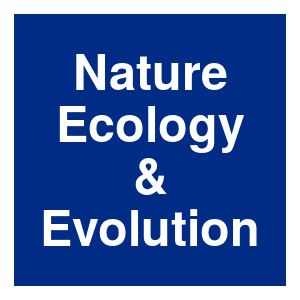
|
A flurry of sex-ratio distortersA. A. Vogan, Nature Ecology and Evolution, 2021.
Two analyses of long-read sequencing show that the Winters sex-ratio distorter of Drosophila has been a part of a recent gene family expansion, coupled to the appearance of suppressors, in a genomic arms race driven by satellite DNA. Keywords: cytoplasmic incompatibility, Drosophila simulans, mechanisms, spermiogenesis, wolbachia |

|
Rapid evolutionary dynamics of an expanding family of meiotic drive factors and their hpRNA suppressorsJ. Vedanayagam, C. J. Lin and E. C. Lai, Nature Ecology and Evolution, 2021.
Meiotic drivers are a class of selfish genetic elements whose existence is frequently hidden due to concomitant suppressor systems. Accordingly, we know little of their evolutionary breadth and molecular mechanisms. Here, we trace the evolution of the Dox meiotic drive system in ... Keywords: cytoplasmic incompatibility, Drosophila simulans, mechanisms, spermiogenesis, wolbachia |
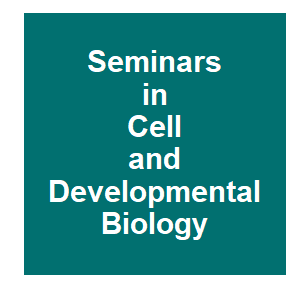
|
Tubulin post-translational modifications in meiosisT. Akera, Seminars in Cell & Developmental Biology, 2021.
Haploid gametes are produced from diploid parents through meiosis, a process inherent to all sexually reproducing eukaryotes. Faithful chromosome segregation in meiosis is essential for reproductive success, although it is less clear how the meiotic spindle achieves this compared ... Keywords: cytoplasmic incompatibility, Drosophila simulans, mechanisms, spermiogenesis, wolbachia |
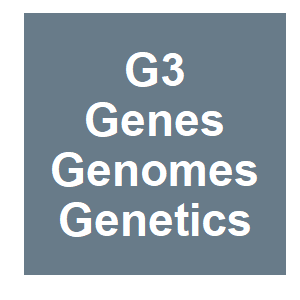
|
High-resolution in situ analysis of Cas9 germline transcript distributions in gene-drive Anopheles mosquitoesG. Terradas, A. Hermann, A. A. James, W. McGinnis and E. Bier, G3-Genes Genomes Genetics, 2021.
Gene drives are programmable genetic elements that can spread beneficial traits into wild populations to aid in vector-borne pathogen control. Two different drives have been developed for population modification of mosquito vectors. The Reckh drive (vasa-Cas9) in Anopheles ... Keywords: cytoplasmic incompatibility, Drosophila simulans, mechanisms, spermiogenesis, wolbachia |

|
Molecular Mechanisms and Evolutionary Consequences of Spore Killers in AscomycetesS. Zanders and H. Johannesson, Microbiology and Molecular Biology Reviews, 2021.
In this review, we examine the fungal spore killers. These are meiotic drive elements that cheat during sexual reproduction to increase their transmission into the next generation. Spore killing has been detected in a number of ascomycete genera, including Podospora, Neurospora, ... Keywords: cytoplasmic incompatibility, Drosophila simulans, mechanisms, spermiogenesis, wolbachia |

|
The supernumerary B chromosome of maize: drive and genomic conflictJ. A. Birchler and H. Yang, Open Biol, 11:210197. 2021.
The supernumerary B chromosome of maize is dispensable, containing no vital genes, and thus is variable in number and presence in lines of maize. In order to be maintained in populations, it has a drive mechanism consisting of nondisjunction at the pollen mitosis that produces ... Keywords: cytoplasmic incompatibility, Drosophila simulans, mechanisms, spermiogenesis, wolbachia |
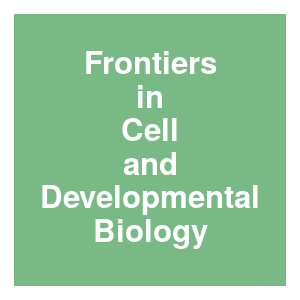
|
A Maternal-Effect Toxin Affects Epithelial Differentiation and Tissue Mechanics in Caenorhabditis elegansC. Lehmann and C. Pohl, Frontiers in Cell and Developmental Biology, 9. 2021.
Selfish genetic elements that act as post-segregation distorters cause lethality in non-carrier individuals after fertilization. Two post-segregation distorters have been previously identified in Caenorhabditis elegans, the peel-1/zeel-1 and the sup-35/pha-1 elements. These ... Keywords: cytoplasmic incompatibility, Drosophila simulans, mechanisms, spermiogenesis, wolbachia |

|
Novel Symbiotic Genome-Scale Model Reveals Wolbachia’s Arboviral Pathogen Blocking Mechanism in Aedes aegyptiN. E. Jiménez, Z. P. Gerdtzen, Á. Olivera-Nappa, J. C. Salgado and C. Conca, mBio, e0156321. 2021.Arboviral diseases such as Zika and Dengue have been on the rise mainly due to climate change, and the development of new treatments and strategies to limit their spreading is needed. The use of Wolbachia as an approach for disease control has motivated new research related to ... Keywords: cytoplasmic incompatibility, Drosophila simulans, mechanisms, spermiogenesis, wolbachia |

|
Structural and mechanistic insights into the complexes formed by Wolbachia cytoplasmic incompatibility factorsY. Xiao, H. Chen, H. Wang, M. Zhang, X. Chen, J. M. Berk, L. Zhang, Y. Wei, W. Li, W. Cui, F. Wang, Q. Wang, C. Cui, T. Li, C. Chen, S. Ye, L. Zhang, X. Ji, J. Huang, W. Wang, Z. Wang, M. Hochstrasser and H. Yang, Proceedings of the National Academy of Sciences, 118. 2021.
Wolbachia bacteria, inherited through the female germ line, infect a large fraction of arthropod species. Many Wolbachia strains manipulate host reproduction, most commonly through cytoplasmic incompatibility (CI). CI, a conditional male sterility, results when Wolbachia-infected ... Keywords: cytoplasmic incompatibility, Drosophila simulans, mechanisms, spermiogenesis, wolbachia |

|
Sexual selection can partly explain low frequencies of Segregation Distorter allelesT. A. Keaney, T. M. Jones and L. Holman, Proceedings of the Royal Society B: Biological Sciences, 288:20211190. 2021.
The Segregation Distorter (SD) allele found in Drosophila melanogaster distorts Mendelian inheritance in heterozygous males by causing developmental failure of non-SD spermatids, such that greater than 90% of the surviving sperm carry SD. This within-individual advantage should ... Keywords: cytoplasmic incompatibility, Drosophila simulans, mechanisms, spermiogenesis, wolbachia |

|
A single mutation weakens symbiont-induced reproductive manipulation through reductions in deubiquitylation efficiencyJ. F. Beckmann, K. Van Vaerenberghe, D. E. Akwa and B. S. Cooper, Proceedings of the National Academy of Sciences, 118:e2113271118. 2021.
We show that a single naturally observed mutation weakens CI by reducing deubiquitylation. These discoveries help elucidate the molecular basis of symbiont-induced reproductive manipulations.Animals interact with microbes that affect their performance and fitness, including ... Keywords: cytoplasmic incompatibility, Drosophila simulans, mechanisms, spermiogenesis, wolbachia |

|
Diverse wMel variants of Wolbachia pipientis differentially rescue fertility and cytological defects of the bag of marbles partial loss of function mutation in Drosophila melanogasterJ. E. Bubnell, P. Fernandez-Begne, C. K. S. Ulbing and C. F. Aquadro, G3 Genes|Genomes|Genetics, 2021.
In Drosophila melanogaster, the maternally inherited endosymbiont Wolbachia pipientis interacts with germline stem cell genes during oogenesis. One such gene, bag of marbles (bam) is the key switch for differentiation and also shows signals of adaptive evolution for protein ... Keywords: cytoplasmic incompatibility, Drosophila simulans, mechanisms, spermiogenesis, wolbachia |
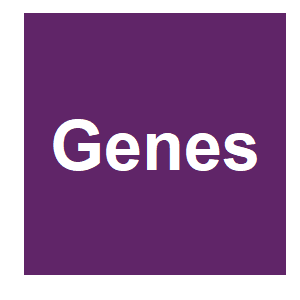
|
Flavors of Non-Random Meiotic Segregation of Autosomes and Sex ChromosomesF. Pajpach, T. Wu, L. Shearwin-Whyatt, K. Jones and F. Grützner, Genes, 12. 2021.
Segregation of chromosomes is a multistep process occurring both at mitosis and meiosis to ensure that daughter cells receive a complete set of genetic information. Critical components in the chromosome segregation include centromeres, kinetochores, components of sister chromatid ... Keywords: cytoplasmic incompatibility, Drosophila simulans, mechanisms, spermiogenesis, wolbachia |

|
RNA editing controls meiotic drive by a Neurospora Spore killerN. A. Rhoades and T. M. Hammond, bioRxiv, 2020.12.30.424869. 2021.
Neurospora Sk-2 is a complex meiotic drive element that is transmitted to offspring through sexual reproduction in a biased manner. Sk-2’s biased transmission mechanism involves spore killing, and recent evidence has demonstrated that spore killing is triggered by a gene called ... Keywords: cytoplasmic incompatibility, Drosophila simulans, mechanisms, spermiogenesis, wolbachia |

|
A CRISPR endonuclease gene drive reveals two distinct mechanisms of inheritance biasS. A. N. Verkuijl, E. González, J. X. D. Ang, M. Li, N. P. Kandul, M. Anderson, O. S. Akbari, M. Bonsall and L. Alphey, bioRxiv, 2020.12.15.421271. 2020.
In this study, we report the functioning of sds3, bgcn, and nup50 expressed Cas9 in an Aedes aegypti homing split drive system targeting the white gene. We report their inheritance biasing capability, propensity for maternal deposition, and zygotic/somatic expression. ... Keywords: cytoplasmic incompatibility, Drosophila simulans, mechanisms, spermiogenesis, wolbachia |

|
Gene drive blocks malaria transmission in mosquitoeslabonline, labonline, 2020.
Employing a strategy known as ‘population modification’, which involves using a CRISPR-Cas9 gene drive system to introduce genes preventing parasite transmission into mosquito chromosomes, University of California (UC) researchers have made a major advance in the use of ... Keywords: cytoplasmic incompatibility, Drosophila simulans, mechanisms, spermiogenesis, wolbachia |

|
A gene-drive rescue system for the modification of malaria mosquito populationsA. Adolfi, Nature Research Bioengineering Community, 2020.
Mosquito populations can now be reliably modified using 1) antimalarial molecules that block parasite development and 2) a CRISPR-based gene drive system that mediates their rapid spreading across the vector population. Keywords: cytoplasmic incompatibility, Drosophila simulans, mechanisms, spermiogenesis, wolbachia |

|
UC researchers pioneer more effective method of blocking malaria transmission in mosquitoesUCI, UCI News, 2020.
University of California, Irvine postdoctoral researcher Adriana Adolfi, in collaboration with colleagues at UCI, UC Berkeley and UC San Diego, followed up on the group’s pioneering effort to develop CRISPR-based gene drive systems for making mosquito vectors resistant to ... Keywords: cytoplasmic incompatibility, Drosophila simulans, mechanisms, spermiogenesis, wolbachia |

|
Efficient population modification gene-drive rescue system in the malaria mosquito Anopheles stephensiA. Adolfi, V. M. Gantz, N. Jasinskiene, H.-F. Lee, K. Hwang, G. Terradas, E. A. Bulger, A. Ramaiah, J. B. Bennett, J. J. Emerson, J. M. Marshall, E. Bier and A. A. James, Nature Communications, 11:5553. 2020.
Here, we develop a recoded gene-drive rescue system for population modification of the malaria vector, Anopheles stephensi, that relieves the load in females caused by integration of the drive into the kynurenine hydroxylase gene by rescuing its function. Non-functional resistant ... Keywords: cytoplasmic incompatibility, Drosophila simulans, mechanisms, spermiogenesis, wolbachia |
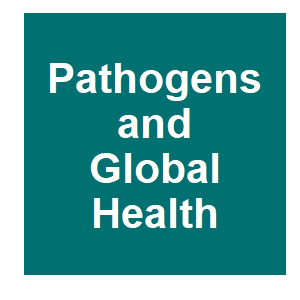
|
Cellular mechanisms regulating synthetic sex ratio distortion in the Anopheles gambiae germlineR. E. Haghighat-Khah, A. Sharma, M. R. Wunderlich, G. Morselli, L. A. Marston, C. Bamikole, A. Hall, N. Kranjc, C. Taxiarchi, I. Sharakhov and R. Galizi, Pathogens and Global Health, 114:370-378. 2020.
Meiotic cleavage of rDNA repeats, located in the sex chromosomes of A. gambiae SD males, affects the competitiveness of mature sperm to fertilize the female oocyte. Keywords: cytoplasmic incompatibility, Drosophila simulans, mechanisms, spermiogenesis, wolbachia |
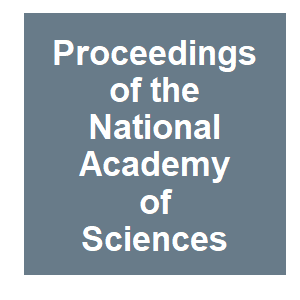
|
Next-generation gene drive for population modification of the malaria vector mosquito, Anopheles gambiaeR. Carballar-Lejarazú, C. Ogaugwu, T. Tushar, A. Kelsey, T. B. Pham, J. Murphy, H. Schmidt, Y. Lee, G. C. Lanzaro and A. A. James, Proceedings of the National Academy of Sciences, 202010214. 2020.
We show here that the Cas9/guide RNA-based gene-drive components of a genetically-engineered malaria mosquito vector, Anopheles gambiae, achieve key target product profile requirements for efficacy and performance. Keywords: cytoplasmic incompatibility, Drosophila simulans, mechanisms, spermiogenesis, wolbachia |
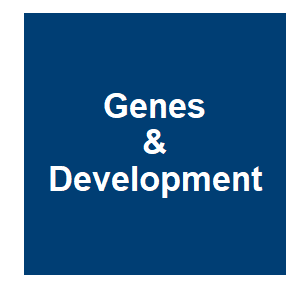
|
Mixed knobs in corn cobsP. Lamelza and M. A. Lampson, Genes and Development, 34:1110-1112. 2020.
In this issue of Genes & Development, Swentowsky and colleagues (pp. 1239-1251) show that two types of knobs, those composed of 180-bp and TR1 sequences, recruit their own novel and divergent kinesin-14 family members to form neocentromeres. Keywords: cytoplasmic incompatibility, Drosophila simulans, mechanisms, spermiogenesis, wolbachia |

|
Distinct kinesin motors drive two types of maize neocentromeresK. W. Swentowsky, J. I. Gent, E. G. Lowry, V. Schubert, X. Ran, K. F. Tseng, A. E. Harkess, W. H. Qiu and R. K. Dawe, Genes and Development, 34:1239-1251. 2020.
Here we describe a second kinesin-14 gene, TR-1 kinesin (Trkin), that is required to mobilize neocentromeres made up of the minor tandem repeat TR-1. Keywords: cytoplasmic incompatibility, Drosophila simulans, mechanisms, spermiogenesis, wolbachia |
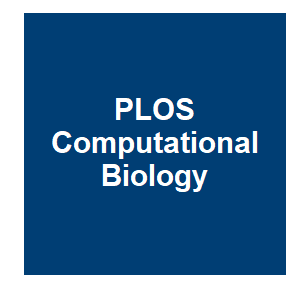
|
Vector genetics, insecticide resistance and gene drives: An agent-based modeling approach to evaluate malaria transmission and eliminationP. Selvaraj, E. A. Wenger, D. Bridenbecker, N. Windbichler, J. R. Russell, J. Gerardin, C. A. Bever and M. Nikolov, PloS Computational Biology, 16:21. 2020.
Here, we investigate the reduced efficacy of current vector control measures in the presence of insecticide resistance and evaluate the likelihood of achieving local malaria elimination using gene drive mosquitoes released into a high transmission setting alongside other vector ... Keywords: cytoplasmic incompatibility, Drosophila simulans, mechanisms, spermiogenesis, wolbachia |

|
Atypical meiosis can be adaptive in outcrossed Schizosaccharomyces pombe due to wtf meiotic driversM. A. Bravo Núñez, I. M. Sabbarini, L. E. Eide, R. L. Unckless and S. E. Zanders, eLife, 9:e57936. 2020.
Here, we demonstrate that in scenarios analogous to outcrossing, wtf drivers generate a fitness landscape in which atypical spores, such as aneuploids and diploids, are advantageous. In this context, wtf drivers can decrease the fitness costs of mutations that disrupt meiotic ... Keywords: cytoplasmic incompatibility, Drosophila simulans, mechanisms, spermiogenesis, wolbachia |
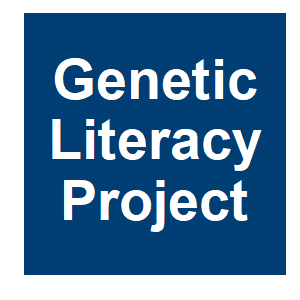
|
CRISPR gene drives could eliminate many vector-driven pests and diseases, but challenges remainJ. Champer, Genetic Literacy Project, 2020.
A functioning gene drive system could fundamentally change our strategies for the control of vector-borne diseases by facilitating rapid dissemination of transgenes that prevent pathogen transmission or reduce vector capacity. CRISPR/Cas9 gene drive promises such a mechanism, ... Keywords: cytoplasmic incompatibility, Drosophila simulans, mechanisms, spermiogenesis, wolbachia |

|
Extensive Recombination Suppression and Epistatic Selection Causes Chromosome-Wide Differentiation of a Selfish Sex Chromosome in Drosophila pseudoobscuraZ. L. Fuller, S. A. Koury, C. J. Leonard, R. E. Young, K. Ikegami, J. Westlake, S. Richards, S. W. Schaeffer and N. Phadnis, Genetics, 216:205. 2020.
Here, we conduct a multifaceted study of the multiply inverted Drosophila pseudoobscura SR chromosome to understand the evolutionary history, genetic architecture, and present-day dynamics that shape this enigmatic selfish chromosome. Keywords: cytoplasmic incompatibility, Drosophila simulans, mechanisms, spermiogenesis, wolbachia |

|
Artificial Selection Finds New Hypotheses for the Mechanism of Wolbachia-Mediated Dengue Blocking in MosquitoesS. A. Ford, I. Albert, S. L. Allen, S. F. Chenoweth, M. Jones, C. Koh, A. Sebastian, L. T. Sigle and E. A. McGraw, Frontiers in Microbiology, 11:1456. 2020.
We recently used experimental evolution to reveal that Wolbachia-mediated dengue blocking could be selected upon in the A. aegypti host and showed evidence that strong levels of blocking could be maintained by natural selection. In this study, we investigate the genetic variation ... Keywords: cytoplasmic incompatibility, Drosophila simulans, mechanisms, spermiogenesis, wolbachia |

|
Split-gene drive system provides flexible application for safe laboratory investigation and potential field deploymentV. L. Del Amo, A. L. Bishop, H. M. Sánchez C, J. B. Bennett, X. Feng, J. M. Marshall, E. Bier and V. M. Gantz, bioRxiv, 684597. 2019.
CRISPR-based gene drives spread through populations bypassing the dictates of Mendelian genetics, offering a population-engineering tool for tackling vector-borne diseases, managing crop pests, and helping island conservation efforts; unfortunately, current technologies raise ... Keywords: cytoplasmic incompatibility, Drosophila simulans, mechanisms, spermiogenesis, wolbachia |

|
CRISPR in Parasitology: Not Exactly Cut and Dried!Bryant, JMB, S.; Glover, L.; Hutchinson, S.; Rachidi, N., Trends in Parasitology, 35:409-422. 2019.
CRISPR/Cas9 technology has been developing rapidly in the field of parasitology, allowing for the dissection of molecular processes with unprecedented efficiency. Optimization and implementation of a new technology like CRISPR, especially in nonmodel organisms, requires ... Keywords: cytoplasmic incompatibility, Drosophila simulans, mechanisms, spermiogenesis, wolbachia |
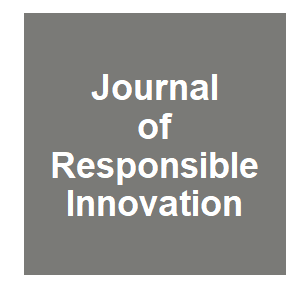
|
Gene drive to reduce malaria transmission in sub-Saharan AfricaA. Burt, M. Coulibaly, A. Crisanti, A. Diabate and J. K. Kayondo, Journal of Responsible Innovation, 5:S66-S80. 2018.
Gene drive is a natural process by which some genes are inherited at a greater-than-Mendelian rate and can spread through a population even if they cause harm to the organisms carrying them. Many different synthetic gene drive systems have been proposed to suppress the number of ... Keywords: cytoplasmic incompatibility, Drosophila simulans, mechanisms, spermiogenesis, wolbachia |
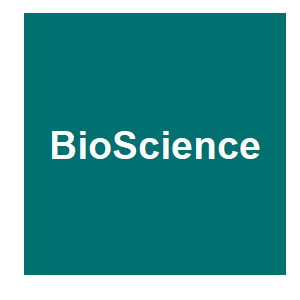
|
Trojan Females and Judas Goats: Evolutionary Traps as Tools in Wildlife ManagementB. A. Robertson, R. S. Ostfeld and F. Keesing, Bioscience, 67:982-993. 2017.
Here, we bring together science from the pest-control, eco-evolutionary, and conservation communities to outline how evolutionary traps can be repurposed to eliminate or control pest species. We highlight case studies and devise strategies for the selection of appropriate cues to ... Keywords: cytoplasmic incompatibility, Drosophila simulans, mechanisms, spermiogenesis, wolbachia |

|
Daisyfield gene drive systems harness repeated genomic elements as a generational clock to limit spreadJ. Min, C. Noble, D. Najjar and K. M. Esvelt, bioRxiv, 104877. 2017.
Here we describe a novel form of gene drive based on the introduction of multiple copies of an engineered ‘daisy’ sequence into repeated elements of the genome. Each introduced copy encodes guide RNAs that target one or more engineered loci carrying the CRISPR nuclease gene ... Keywords: cytoplasmic incompatibility, Drosophila simulans, mechanisms, spermiogenesis, wolbachia |

|
What’s a Gene Drive? And what are the risks and benefits?Risk Bites, Arizona State University, 2015.
This video uses ‘white board cartooning’ as a means of illustrating concepts. Keywords: cytoplasmic incompatibility, Drosophila simulans, mechanisms, spermiogenesis, wolbachia |

|
Gene DriveWyss Institute, Harvard University, 2014.
This short video produced by the Wyss Institute and Harvard School of Public Health illustrates in very basic terms the concept of gene drive as distorted patterns of inheritance. Keywords: cytoplasmic incompatibility, Drosophila simulans, mechanisms, spermiogenesis, wolbachia |

|
Site-specific selfish genes as tools for the control and genetic engineering of natural populationsBurt, A, Proceedings of the Royal Society B-Biological Sciences, 270:921-928. 2003.
Site-specific selfish genes exploit host functions to copy themselves into a defined target DNA sequence, and include homing endonuclease genes, group II introns and some LINE-like transposable elements. If such genes can be engineered to target new host sequences, then they can ... Keywords: cytoplasmic incompatibility, Drosophila simulans, mechanisms, spermiogenesis, wolbachia |

Contact
David O’Brochta
Foundation for the
National Institutes of Health
geneconvenevi@fnih.org
RSS

